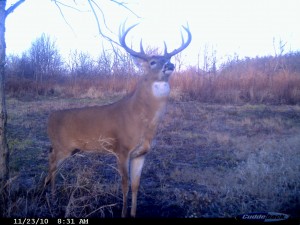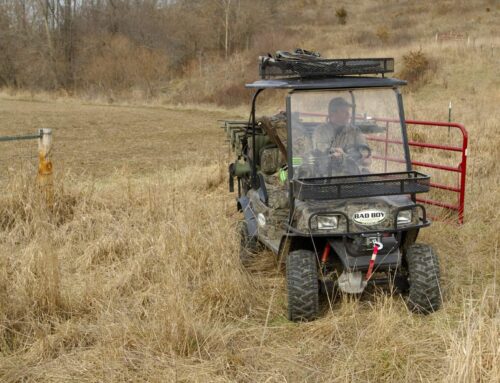Part 2 of our exclusive 3-part series “Manage the Land, Manage the Deer” from our good friend Flatlander, who lives, hunts and manages ground in his home state of Illinois:
As we move through the early spring trees are leafing out but not in full foliage, so this is still a good time do to some chain saw or hand saw work, as we discussed in Part 1 of this series.
Find staging areas, small clearings and food plot areas near your tree stands, and cut away all overhanging limbs up to about 12 feet high, EXCEPT one. Leave one limb with a low-hanging branch, and prune that branch so the limb is eye level. This will become a licking branch or eye-rubbing branch–basically the coffee house or pub for the local deer herd.
Make sure this lone licking branch is within view and shot distance of your stand or blind; don’t get blind-sided by buck activity that may require you to turn around in your stand. The deer will have their heads up licking and smelling this branch, so you’ll need to keep your movements to a minimum when deer are around this attraction. Don’t underestimate the power of a properly placed licking branch!
Here’s another good pruning technique: Find a spot for a ground blind (I like to have 3 or 4 of these locations) where you can prune or cut a huge hole in the brush, such as honeysuckle or autumn or Russian olive, and then stack the brush near the cut out. When the winds or deer patterns change, you have another site prepped for a pop-up blind, with brush already there to cover it up. This works great on a field edge or near a small opening with brush on all sides. I like to climb into these hidden spots on extremely windy days where deer don’t go far from cover, or on rainy days when the blind is handy. A half-hour and some saw work now will pay off huge come October.
Lastly, you are most likely making final seed decisions for food plots, how do you know what to plant? There are a million answers but here are some foolproof basics.
–If the farmer next door has 200 acres of corn, don’t think your ¼-acre will compare unless it’s standing in December when his isn’t. Mostly likely yours won’t make it that long, so corn is a waste of time and resources.
–Plant opposites of what crops are around you. If the neighboring farmers have soybeans, plant some sorghum, cow peas or Austrian winter peas. If the neighbors have corn, plant soybeans, brassicas, clover, etc. You can’t compete with large-scale farm operations, so instead compliment them. Deer are like humans in that they want and need variety. Get your seeds ordered or buy them in stores before they are sold so you’ll be ready to go when the soils are ready for seed.—Matt “Flatlander” Cheever







